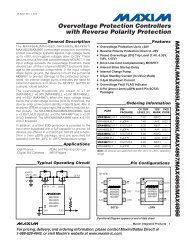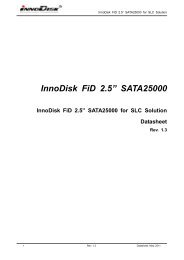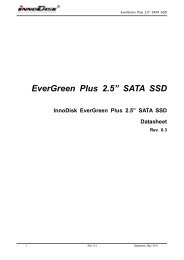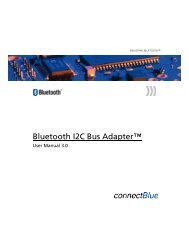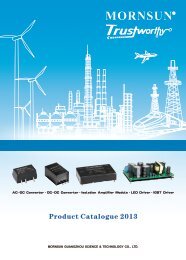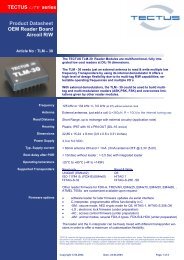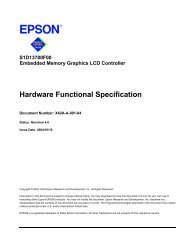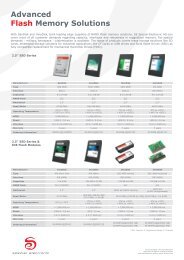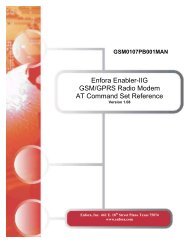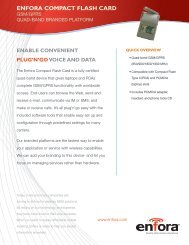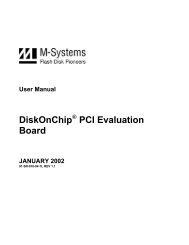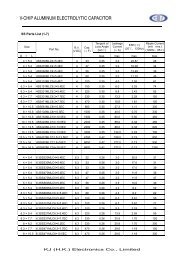Enabler II-G Assiste GPS Integration Guide - Farnell
Enabler II-G Assiste GPS Integration Guide - Farnell
Enabler II-G Assiste GPS Integration Guide - Farnell
You also want an ePaper? Increase the reach of your titles
YUMPU automatically turns print PDFs into web optimized ePapers that Google loves.
Enfora <strong>Enabler</strong> <strong>II</strong>I-G<br />
Modem <strong>Integration</strong> <strong>Guide</strong><br />
4. Introduction<br />
4.1. Product Overview<br />
Enfora <strong>Enabler</strong> <strong>II</strong>I-G modem is a compact, wireless OEM module that utilizes the Global System<br />
for Mobile Communications (GSM) and GPRS (General Packet Radio Services) international<br />
communications standard to provide two-way wireless capabilities via GSM services. The Enfora<br />
<strong>Enabler</strong> <strong>II</strong>I-G module is a fully Type-approved GSM/GPRS device, enabling application-specific,<br />
two-way communication and control.<br />
The small size of the Enfora <strong>Enabler</strong> <strong>II</strong>I-G module allows it to be integrated easily into the<br />
application and packaging.<br />
4.2. Key Features of the <strong>Enabler</strong> <strong>II</strong>I Module<br />
The following table summarizes the main features of the Enfora <strong>Enabler</strong> <strong>II</strong>I-G Radio Module.<br />
Interface<br />
Power<br />
Data input/output interface 100 position 0.4mm pitch connector<br />
Primary serial port V.24 protocol, 1.8V levels, full 9-pin, UART<br />
implementation<br />
Secondary serial port USB Debug only (Enfora Use only)<br />
GPIO Up to 20 GPIO Some GPIO pins have dual<br />
purpose functionality.<br />
USB USB full-speed (FS) device compatible with the<br />
Universal Serial Bus Specification Revision 2.0<br />
and the universal Serial Bus Specification<br />
Revision 1.1. (USB not available for primary serial<br />
port at this time)<br />
I2C Multi- Master Serial Computer Bus Supports<br />
Master and Slave<br />
SPI Port Serial Peripheral Interface (Master or Slave)<br />
Keyboard 5 x 5 keyboard support<br />
Audio Digital audio via MCSI port<br />
Voice Supports four vocoder modes: full-rate (FR),<br />
enhanced full-rate (EFR), half-rate (HR), and<br />
adaptive multi-rate (AMR)<br />
Antenna Interface ultra Miniature Coaxial Interconnect (MCD) or B2B<br />
Spring contact<br />
Command protocol Enfora Packet API, GSM AT command set<br />
Subscriber Identification Module Optional 1.8/3 V mini-SIM carrier and interface on<br />
(SIM)<br />
board with SIM detect<br />
Voltage backup Voltage backup pin available to maintain RTC,<br />
battery capable<br />
Reference clock 32kHz and 13 Mhz. output reference clocks<br />
(accessible via 100-pin connector)<br />
ADC 1 ADC port<br />
Optional remote SIM Accessible via the 100-pin connector<br />
Electrical power 3.3 to 4.5 Vdc (vbat)<br />
Peak currents and average<br />
power dissipation<br />
Refer to the Operating Power table in the<br />
Technical Specifications for peak currents and<br />
average power dissipation for various modes of<br />
operation.<br />
Radio Features Frequency bands EGSM 900, GSM1800, GSM 850 and GSM 1900<br />
capability.<br />
GSM0308PB001 8 Version 1.03– 7/17/2007



